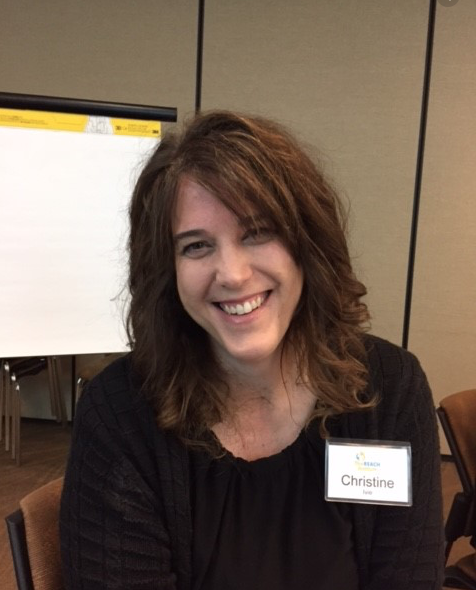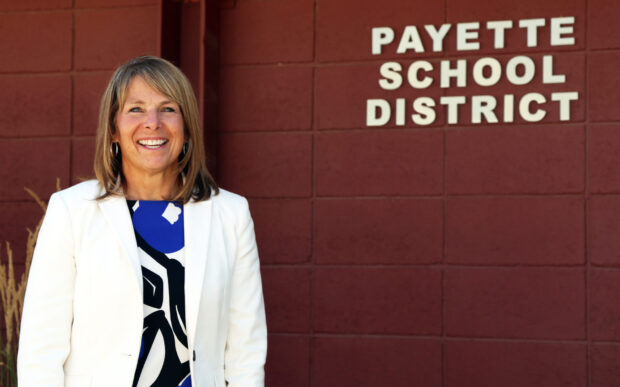Before the State Board of Education closed Idaho’s schools on March 23, some rural educators were already planning for a shutdown.
Others had to pivot overnight.
The coronavirus closure forced rural schools to confront all the challenges of remote learning. For all the frustrations — and short- and long-term concerns about student achievement — some administrators say their schools have found a new rhythm within the new normal. And they say their communities have rallied behind their local schools.
After one month — and as some schools hope to reopen in May — here are case studies from five rural schools.
Cascade: ‘We’re going to be pioneers in this’
Jeff Blaser left the West Ada School District for the Cascade School District. As schools large and small make the abrupt transition to remote learning, he says he’d rather run a district with 200 students then work in a district with 40,000 kids. Smaller districts can move more quickly, and Cascade did.

“We’re going to be pioneers in this,” he said.
Teachers moved within a matter of days to change the delivery model, said Lindsay Anthony, Cascade’s academic coach. On March 25, just days after teachers were told to prepare for a longterm closure, Cascade came out of spring break and rolled out its remote learning system.
That’s going to be the new normal in Cascade, at least through the end of the year. In part because of its proximity to the resort community of McCall — and because of the high coronavirus infection rates in Blaine County, another destination for tourists — Cascade will not reopen schools this year.
However, Cascade will open its computer lab for high school students who are at risk of falling behind on graduation requirements. Starting this week, they’ll be able to come in by appointment, for 30 minutes at a time, working at least 10 feet away from any classmates. The goal, said Blaser, is to give at-risk students the support they’re missing at home.
Cascade has tried to keep the curriculum unchanged, altering only the delivery model. And while the lesson plans have remained familiar, remote learning leaves a void, one not unique to Cascade. Extracurricular programs are on hold, and when school reopens, it’s not clear whether Cascade will have the money to start them back up.
“What if we don’t get that back immediately?” said Amos Lee, the district’s athletic director.
Heritage Academy: ‘I would rather be able to see the kids every day’
Monday, March 30, was a long day for Heritage Academy. Staff at the Jerome-based charter school were out on in the community until 9:30 p.m., delivering Chromebooks to families who needed loaners. Other staffers were on the phone helping parents troubleshoot on the devices.

A month later, the K-8 charter school has settled into something of a rhythm. So much so that administrator Christine Ivie doesn’t see trying to reopen by May 21, the end of the school year. Confirmed coronavirus case numbers are relatively high in Jerome County and much of south-central Idaho, and Ivie doesn’t think it makes much sense to make teachers shift back, quickly, for a brief return to face-to-face instruction.
“I would rather be able to see the kids every day,” she said. “(But) when this all started I was worried about just how effective we would be.”
Like other rural administrators, Ivie credits a community approach. Local businesses have stepped up to identify WiFi hotspots for students. The school’s bus drivers have stayed at work, delivering meals and printed learning materials to students. In essence, the drivers are a point of contact for parents and kids.
Maintaining that contact is a challenge. Some students check in rarely, but just enough so teachers know they are doing work. A couple of the school’s 131 students have been out of touch since the closure, and school officials will get in touch with the county’s juvenile diversion program to see if there’s more the school should be doing.
It’s a new twist on an old demographic challenge. The students who aren’t engaged now are the same at-risk students with high absentee rates. “It’s an issue that just goes beyond this virtual environment,” Ivie said.
Payette: ‘Our kids can’t afford to lose four or five months of learning’
Sometimes, the online model just doesn’t work.
Recently, Travis Bommersbach received a panicked message from one of his Payette High School students. The student couldn’t open an English assignment, and after three unsuccessful attempts to open the attachment, Bommersbach drove to her house.
“I just kind of gave her a 10-minute lecture from their front lawn on what we were reading,” he said.
A bonus: a classmate was at the house too, so Bommersbach could teach two students at the same time.

Like their counterparts, Payette School District officials say they are adapting and innovating amid the coronavirus outbreak. Officials are getting more and more printed materials to students who find they need them. A donation of 200 computers from Idaho Business for Education will help bridge the device divide. Veteran teachers and new teachers are collaborating more than ever. “They’re all very vulnerable in learning and working through it together,” Superintendent Robin Gilbert said.
Gilbert is still hoping to get the doors open, at least on a limited basis. She’d like to open the school gym for small group sessions for couch-surfing homeless students and other at-risk learners. “We’re not done with this, and our kids can’t afford to lose four or five months of learning.”
Gilbert is worried about at-risk students — and the prospect of a widening achievement gap in a district with one of the state’s highest poverty rates. But administrators know this spring is creating a strain for all families, including households where stay-at-home parents are working and supervising the learning process. “The tension’s real,” Bommersbach said, “and it’s getting a little bit worse each week.”
Preston: ‘One of the things we’re afraid of is parents giving up, or children giving up’
On March 16 — one day after Gov. Brad Little stopped short of ordering a statewide school closure, and urged administrators to keep their doors open — the Preston School District heeded the governor’s advice.
 Only 60 to 75 percent of students showed up that Monday, and administrators at the Southeast Idaho district got the message. The next day, students started spring break early. Teachers showed up at school, to start planning the shift to online learning.
Only 60 to 75 percent of students showed up that Monday, and administrators at the Southeast Idaho district got the message. The next day, students started spring break early. Teachers showed up at school, to start planning the shift to online learning.
The March 30 rollout came with the typical complications.

The district has delivered 500 to 600 computers to students who need them. About 10 percent of students have no home Internet, although some students can hop onto WiFi hotspots around town. The district struggled to get households to sign onto the district’s virtual private network, so it could make sure school-owned computers aren’t used to access inappropriate sites, said Clint Peery, Preston High School’s assistant principal. Even in some wired households, parents and students are vying for precious online time — creating a workflow challenge for kids and their teachers.
One prevailing theme is “frustration,” said Amy Priestley, a fourth-grade teacher. Parents are trying to navigate the technology and stay on top of the emails from school — and from her end, Priestley can relate. “My inbox was just flooded, but how else do you communicate?”
In the face of complications, Preston has consciously tried to simplify things. The teachers still want their students learning, but they’re trying to focus on the basics. Even if Preston schools reopen this spring, educators expect to be playing catchup in the fall.
“One of the things we’re afraid of is parents giving up, or children giving up,” Superintendent Marc Gee said.
Shoshone: ‘We’re prepared either way’
Across much of rural Idaho, many residents might at least feel detached from the coronavirus outbreak.
That isn’t the case in Shoshone. Located an hour’s drive south of Sun Valley, the Magic Valley farming community is closely tied to one of the nation’s coronavirus hotspots.
Many Lincoln County residents commute to affluent Blaine County to work. Six of Shoshone’s teachers live in Blaine County, and self-isolated as the virus spread through their community. As Shoshone moved to remote learning in late March, the district had to communicate by mail with three sets of parents who were self-isolating out of state.
While the Magic Valley has some of the highest coronavirus infection rates in the state, the Shoshone School District hasn’t ruled out reopening school later this spring, if it can meet the State Board’s guidelines to reopen. “We’re prepared either way, but we’re hoping that we meet the criteria,” said Superintendent Rob Waite, who added that he worries about at-risk students falling farther behind their classmates.
However, Waite does see some positives from the remote learning process. As his faculty has tried to stay in constant touch with parents, teachers are fielding more calls from home — even from parents who used to be uncomfortable about asking questions. “I think that will lay the groundwork for even more success when we get back.”
